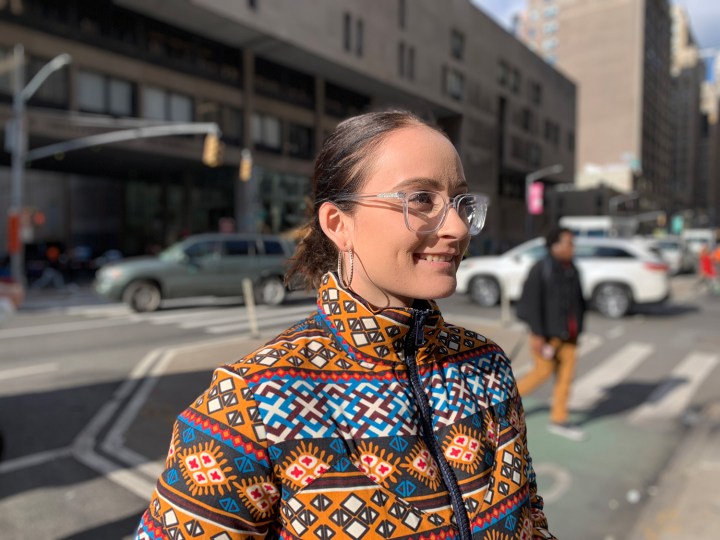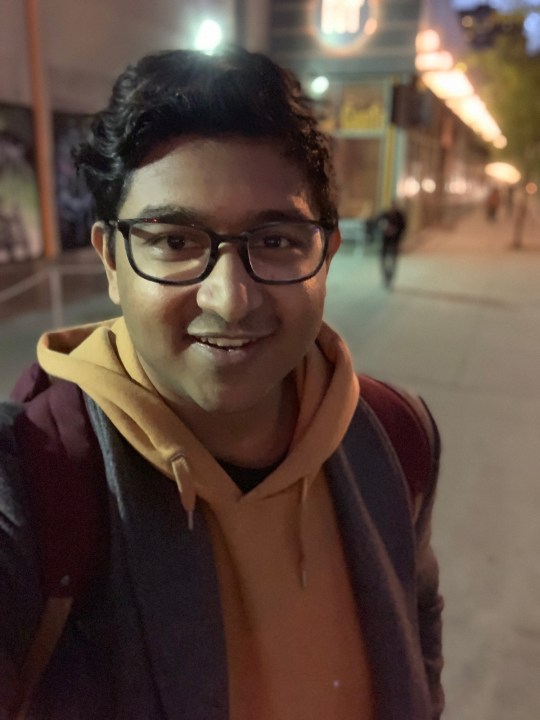Portrait Mode has become a staple feature in almost every single smartphone camera — from budget to expensive flagship devices. It’s when a blur (or bokeh) effect is added behind a subject to deliver a portrait that looks as though it was captured by a DSLR camera. It’s one of the main purposes for having a dual-lens camera system, though other benefits include 2x optical zoom (depending on the phone).
But not all phones use two lenses to create a Portrait Mode effect. Google’s Pixel phones are the best example of what a single-lens camera can do with computing power. Instead of relying on a secondary lens for depth information, Google relies on a neural network algorithm to identify the subject from the background. In a similar manner, Apple is taking a page out of Google’s book with the iPhone XR. It’s the cheapest iPhone available from the 2018 trio, and it’s the only one without a dual-lens camera. Instead of removing Portrait Mode entirely — like Apple has done with the iPhone 8 or iPhone 7 — there’s now a Portrait Mode powered completely through artificial intelligence and neural nets.
How good is it, especially compared to the iPhone XS? We put the Pixel 3, iPhone XR, and iPhone XS to the test in a Portrait Mode shootout. A note before we start comparing photos: We tried to stay at the same distance from the subject for most of the photographs here, to highlight the differences in how each phone handles Portrait Mode. For example, the iPhone XS uses a secondary telephoto lens, so it zooms in a lot more than the Pixel 3 or the iPhone XR. The XR goes much wider than we expected. We did adjust distance for a few photos, so keep that in mind. Also, you may prefer a different photo over our favorite. There are some technical reasons why a photograph may be better than another, but a lot depends on personal preference, and it’s okay to come to a different conclusion.
Daylight
There’s a lot that can go wrong with Portrait Mode on smartphones, but most don’t have much of a problem in broad daylight. In the first set of photos, all three phones do a good job of accurately identifying the subject. There aren’t any errors, but you can see the Pixel 3 tends to keep the subjects body in focus, whereas the iPhone XS and XR opt for a radial blur that keeps the face in focus more than anything else (the iPhone XR’s radial blur isn’t as strong).
Either the iPhone XR or XS could win here, but we’re giving it to the XR because the subject’s face isn’t as bright as the XS photo. The Pixel 3 photo is good, but it lands last because it’s far too dark, despite being sharp with an accurate cutout.
Winner: iPhone XR
Here’s one that’s a bit tricky, because the light is shining straight into the camera. All three of these aren’t perfect, but the iPhone XS comes out on top. It retains the best colors (though the subject is still a bit too yellow), whereas the iPhone XR and Pixel 3 photos look more muted. The XS does lose points for messing up the left earring, and it does quite a poor job with the sky in the background, overexposing it too much. The iPhone XR is a close second this time. The subject’s face is grainier than the iPhone XS photo, and the colors are dull. The right shoulder is also a little blurred. It has the best HDR, though.
While the Pixel 3 overall does the best job of identifying the edges of the subject, you’ll find the subject’s face is extremely grainy. The colors are also off throughout the photo. It does a solid job of not overexposing the sky too much, unlike the iPhone XS, but that’s not enough to scrape a win here.
Winner: iPhone XS
Evening
These photos highlight how close the iPhone XS zooms into the subject for Portrait Mode, and how much wider a shot the iPhone XR takes. They were all captured standing in the same spot. All three phones do an excellent job identifying the edges of the subject, and detail is impeccable. We’d say the iPhone XS has the best blur, capturing the highly-sought bokeh effect with the lights in the background. The Pixel 3 photo wins for the best skin tone, which looks the most natural. It loses points for the background color tone, which is a little too red.
It’s a close call, but the iPhone XS wins again.
Winner: iPhone XS
This one’s easier to judge. The Pixel 3 comes last again for messing up the blur. The subject is fine, but look to the right side! It keeps some of the windows in focus, though they were further away from the subject. A branch of the tree also doesn’t look as blurred as it should be, and the photo’s background has a reddish hue.
We like both the iPhone XS and XR photos, with the former having a stronger blur effect. But zoom into the subject’s face again, and the iPhone XR photo has less grain. For that, we’re giving the XR the win.
Winner: iPhone XR
The iPhone XR’s shot clearly has the least amount of grain. It also has a nice blur on the left wall before the subject’s face, unlike the Pixel 3 photo, which doesn’t blur that area at all. Color tones are great all around, but the XR loses points for messing up the edges of the glasses. The Pixel 3 comes second. It does the best job identifying the edges of the subject, but the background hue is a little too yellow, and the subject is a tad grainy. The iPhone XS photo comes last. It’s not bad, but it’s too grainy and dark, despite good use of blur around the subject.
Winner: iPhone XR
Night and indoors
Like the last photos, there are two standouts here. The Pixel 3 and the iPhone XR. Both are sharp, detailed photos with accurate blur around the edges of the subject. The Pixel 3 goes a step further to catch all the hairs well, and it has a stronger blur than the iPhone XR photo. It does mess up, however, as the lights at the top right of the photo aren’t as blurry as they should be, and the iPhone XR takes the win for that reason alone.
The iPhone XS is decent thanks to the great blur, but it’s grainy, and some edges show inaccurate blur.
Winner: iPhone XR
We were surprised by the difficulty the iPhone XR and the iPhone XS had in dealing with the blue light hitting the subject’s face in this photo. It looks quite natural, and in reality it was closer to the Pixel 3 photo, which we love. You can guess who’s taking the win here, but it’s worth mentioning that the iPhone XR photo maintains the best blur accuracy. The Pixel 3 messes up the hair a little, and so does the XS. All three have great background blur, but the Pixel 3 photo is the one we’d share.
Winner: Pixel 3
This is another easy one to judge. The iPhone XS photo is far too blurred across the entire shot, and the iPhone XR isn’t the sharpest, either. The Pixel 3 photo has the best detail, and it has the most accurate skin tone, which looks incredibly natural. It’s excellent.
Winner: Pixel 3
It’s a close call between the Pixel 3 and the iPhone XR. Both have good detail and accurate edges. The iPhone XR doesn’t have as strong of a blur, but it has better noise reduction, so we’re giving it the edge. The iPhone XS messes up the blur around the hair, but it’s far darker than the other two, putting it last.
Winner: iPhone XR
Selfies
Portrait Mode works on the front-facing selfie camera on all these phones, and in this test, we think the Pixel 3 easily wins. It’s the brightest, has the most detail, and it’s the one we’d share. The iPhone XS photo is too fuzzy and dark, but the iPhone XR does an admirable job with great background color. It’s not as detailed as the Pixel 3 photo, though. Technically, the iPhone XR and XS photos should look exactly the same because they have the same TrueDepth camera system on the front. We think there might have been some subtle traffic light changes here that altered the end result.
Winner: Pixel 3
The Pixel 3 is the most detailed here, but that’s sometimes not what we want from a selfie. The skin tone is a little too cold, which doesn’t make this a selfie we’d want to share. The iPhone XS and XR photos are nearly identical, which makes sense, because they have the same camera. The iPhones make the subject’s skin a bit more vibrant, and the background has better color. They win out over the Pixel.
Winner: iPhone XS and iPhone XR
Other subjects
The biggest weakness the iPhone XR’s Portrait Mode is that it only works with humans. Apple has trained the camera to identify faces, so when it doesn’t find a face, it will say “no person detected.” That means you can’t experiment with using the mode on other objects, but you can on the iPhone XS and the Pixel 3. Sure, “Portrait Mode” should ideally be used for portraits of people, but it adds more versatility to the mode when you can use it on almost anything.
The iPhone XR photo is great but, of course, there’s no bokeh. This is basically a normal photo taken without Portrait Mode. The iPhone XS does detect the object, but it’s far too dark and the blur on the tip of the glass is a little off. The Pixel 3 photo is the one we’d share, because it’s bright enough and there’s a lot of good color and detail, even if it messes up part of the glass.
Winner: Pixel 3
The Pixel 3 quite easily wins out here again. It has the best color, the most accurate cutout around the edges of the subject, and the sharpest detail. The iPhone XS asked us repeatedly to keep moving further away from the figurine, so it’s a little more limited if you wanted to get a close up shot. But at least it works. The iPhone XR again didn’t apply a blur at all.
Winner: Pixel 3
The iPhone XR takes a surprise win
It looks like Apple may have caught up — and perhaps even surpassed — Google’s computational photography prowess for Portrait Mode. The Pixel 3’s Portrait Mode is more versatile, and it’s very close with five wins, but the iPhone XR edges out with six wins.
The iPhone XR is much better at low-light Portrait Mode photos compared to the iPhone XS, which uses the secondary lens that doesn’t have as wide an aperture to let more light in. That’s a surprise given the higher price of the iPhone XS, and shows how fancy software can sometimes beat superior hardware.









































